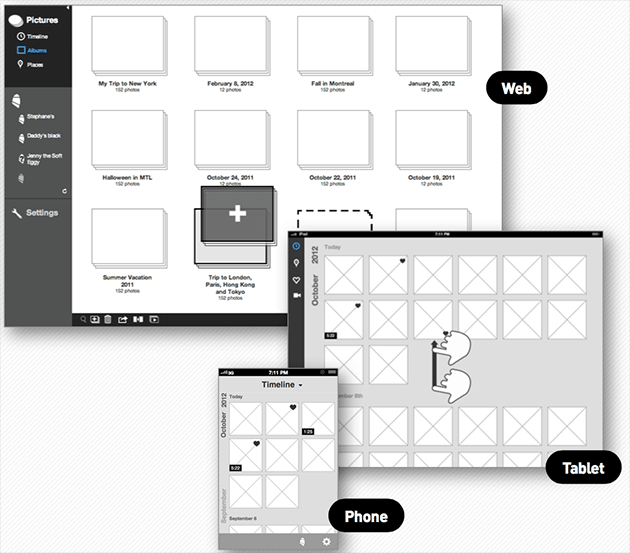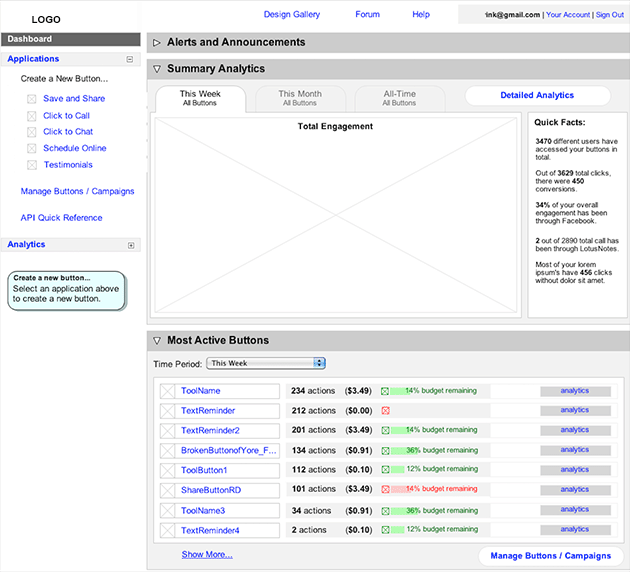
23
Jun 2015
Beyond wireframes

Much has been written on the importance of prototyping tools like Axure or Balsamiq in the design stage of a project. Usually, in a digital development cycle, we start to prototype only when the vision of the future product or service is clear i.e. the story is told, the scenarios defined, and the sketches have been sketched.
A scenario or storyboard is an illustrated representation of the story that we’re going to tell and the kind of experience we’ll want to introduce to the product or service. We describe the collection of parameters with the highest precision possible, in order to visualize and plan the wireframes. This helps create a common vision and becomes a reference tool that saves time and resources down the line. Even for those who aren’t illustrators, useful tools are available online.
Wireframes allow us to visualize interactions more concretely, to clarify the constraints, and to produce interface specifications that developers will use. Several iterations are made during the design process – usually these are limited since continual changes here represent a significant effort that can quickly eat up a budget.
A wireframe isn’t a final product but it’s close in terms of interactions. It’ll be refined and ideally tested several times during the design and development phases. It’s a good communication tool for designers, front-end developers and programmers.
This is a wireframe:

We note a tendency these days to cut out the phase of defining a common vision and to use wireframes as tools for reflection. As a result, much time is lost, and needless iterations are performed. When the vision changes, teams restart the wireframing…
A wireframe isn’t a good tool to communicate with decision makers. Most find them too complicated to understand. We must first tell the story of the product or service that we’d like to put in place and how it will unfold. In order to communicate effectively, it’s necessary to tell the story of the product or service and the experience we’re targeting in a more visual way.
The story told by storyboard sequence must be simple and effective. Everyone understands them, they stimulate the imagination and give a more informed voice to stakeholders around the table.
We can’t state the importance of taking the time to reflect before designing enough. Especially in times where we can’t afford to allocate budgets to unnecessary iterations, we must turn to the variety of existing methods and tools and integrate them into our development cycles.
0 Comment(s)